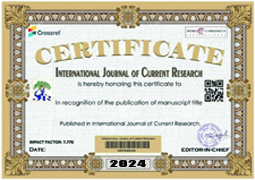Urad bean belongs to the Family Fabaceae, Subfamily Faboideae, Gnus Vigna, Species Vigna mungo. The chromosome number 2n=22. Urad bean (Vigna mungo) is a different species from mung bean/green gram (Vigna radiata). Both species are similar and are sometimes called by the same vernacular names. Urad bean has been reclassified from the Phaseolus to the Vigna genus. However, at present they are considered as 2 separate species with as major differences: flower colour (bright yellow in Vigna mungo, pale yellow in Vigna radiata), pocket on the keel (longer in Vigna mungo than in Vigna radiata), fruit shape (pods of Vigna mungo are shorter and erect on the peduncle, in Vigna radiata the pods are longer and spreading or pendulous). Three taxa are distinguished within Vigna mungo: 1) var. mungo, with large, black-seeded and early-maturing cultivars; 2) var. viridis Bose, with greenish dull or glossy seeds and late-maturing cultivars; and 3) var. silvestris Lukoki, Maréchal & Otoul, the wild type; compared to cultivated types it is smaller, more climbing, more hairy, with denser inflorescences and small seeds with prominent raised aril; it is considered the ancestor of the cultivated black gram. Common names are Black gram, urd bean, urad bean, Haricot urd. In Gujarati: aḷad, aḍad; Hindi: uṛad dāl, urad dāl; Kannada: uddu, uddina bēḷe; Marathi/Konkani: uḍid; Malayalam: uẓhunnu; Punjabi: "mānha di dāl"; Tamil: uḷuntu, ulundu, ulutham paruppu; Telugu: minumulu and uddhi pappu in Rayalaseema; Tulu: urdu bele; Urdu: urad dāl . Other Names are Adad, Arad, Karu-minimulu, Maga, Mas, Mash kalai, Masha, Matimah, Minumulu, Nallaminumulu, Tikari kalai, Uddu, Udid, Ulundu, Urad, Urd dhal, Urdi, Uzhunnu, ambérique, black gram, fagiolo urd, feijão-da-china, frijol mungo, haricot mungo, mash, mash kalai, masha, moong, mung bean, urd, urd bean, urd-bean, urdbohne, urdböna, urd|ulundu / urd. These are available in various avatars as whole, dehulled and in the form of split bean. Vigna mungo is a hairy and bushy, annual plant which has an elaborate taproot. The stem is highly branched from the base. The plant is cultivated for its edible seeds in tropical countries, especially in Asia. In addition, being an important source of human food and animal feed, it also plays an important role in sustaining soil fertility by improving soil physical properties and fixing atmospheric nitrogen. Being a drought resistant crop, it is suitable for dry land farming and predominantly used as an intercrop with other crops. This crop is itself a mini-fertilizer factory, as it has unique characteristics of maintaining and restoring soil fertility through fixing atmospheric nitrogen in symbiotic association with Rhizobium bacteria, present in the root nodules. Crop is suitable for inter cropping with different crops such as cotton, sorghum, pearl millet, green gram, maize, soybean, groundnut, for increasing production and maintaining soil fertility. In India the black gram is one of the important pulses grown in both Kharif and Rabi seasons. This crop is extensively grown in southern part of India, northern part of Bangladesh and Nepal. In Bangladesh and Nepal it is known as mash daal. It is a popular daal (legume) side dish in South Asia, that goes with curry and rice as a platter. Black gram has also been introduced to other tropical areas such as the Caribbean, Fiji, Mauritius, Myanmar and Africa. Black gram (urad bean) will be black in colour usually. But black gram in green colour has been invented by C.S.Azad University of Agriculture and Technology, Kanpur (variety Shekhar 1). In this review article on Origin, Domestication, Taxonomy, Botanical Description, Genetics and Cytogenetics, Genetic Diversity, Breeding, Uses, Nutritional Value and Health Benefits of Urad bean or Black gram are discussed.





